War Memorial #831 ~ Ilkley

Note: the published coordinates are for convenient parking as Step 1 is at the same location as a pre-exisiting EarthCache
The cache, a camo-taped sample tube, is hidden in a small green area, a short distance away from the Ilkley Memorial Gardens (IMG) with its two war memorials. The memorials with associated pavilion shelters and gardens are a Grade 2 listed national monument.
It was hidden with recognition of a previous cache of the same name based here - Hillgorilla's GC8BBGZ, hidden on 28/7/19 and archived on 18/10/22 with 31 finds and 5 FPs.
Having taken advantage of the ticketed 1-hour free parking in one of the nearby streets, make your way to . . .
Step 1: at N 53 55.479 W 1 49.735 on the west side of the WW1 cenotaph, you will note a separate plaque at the foot of the memorial dedicated to Thomas Maufe who died accidentally (see text above) on A June 1917
Step 2: From the same location, if you examine the panel of names on the west side of the memorial obelisk, you will find the names of B others with the same family name.
Step 3: walk west a few metres to the large rock bearing the Armistice Centenary Memorial. The crest at the top of this depicts a creature with C letters in its name.
Step 4: continue west to the WW2 Memorial set inside a gated shrine on the western edge of the gardens. At the rear of this are two long stained glass panels and at the bottom of the right-hand one is an insignia with two large letters. The difference in alphanumeric value (A=1 B=2 C=3 etc) between these = D
Step 5: At the same location, at the base of the plaque with the names of those who lost their lives in WW2 is a separate section 'Other Conflicts' with a single name and the year 195E
Step 6: Now move across to N 53 55.469 W 1 49.742 where you will see a small plaque on a pedestal below an exotic tree. There are several punctuation and capitalisation errors on the plaque including the erroneous use of a lowercase initial letter in the second word in line 4. The alphanumeric value of the last letter of this word = F
The cache is hidden at:
N 53 55.FE(C+D) W 1 49.(B+F)A(B+E)

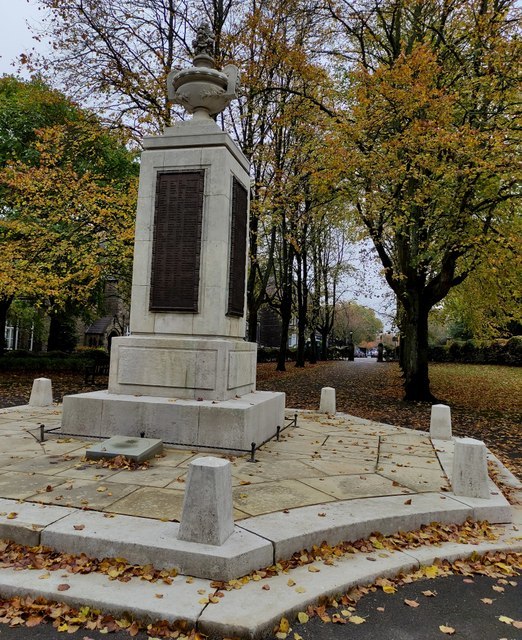
The cache, a camo-taped sample tube, is hidden in a 'hidden' green area, a short distance away from the Ilkley Memorial Gardens (IMG) with its two war memorials. The memorials with associated pavilion shelters and gardens are a Grade 2 listed national monument.
The aftermath of WW1 saw the biggest single wave of public commemoration ever with 10,000s of memorials erected across England. This was the result of both the huge impact on communities of the loss of 880,000 British lives, and also the official policy of not repatriating the dead which meant that the memorials provided the main focus of the grief.
The Ilkley War Memorial forms part of a memorial garden located at the west end of The Grove, Ilkley's principal shopping street. The garden has an irregular hexagonal shape with the narrowest part at the east end and the second narrowest part at the west end bordering a stream. The WW1 memorial is located to the centre of the garden, at the end of a tree-lined processional path that runs east-west from a gated main entrance at the east end of the garden. Further secondary gated entrances lie on the north and south roadsides of the garden. A WW2 memorial lies on the same axis as the WW1 memorial and is located towards the west end of the garden, flanked on each side by shelter pavilions.
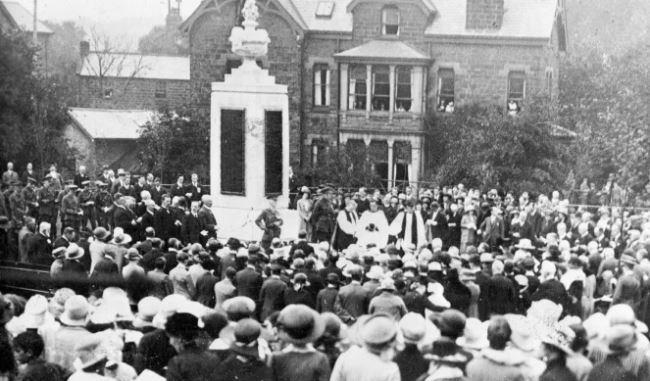
WW1 Memorial: In 1919 Ilkley War Memorial Committee held an architectural competition and invited designs for the erection of a memorial and the laying out of memorial gardens on a parcel of land that had been bought by Joseph Cooper of Norwood House and donated to Ilkley District Council. The architect Walter Brierley of York was appointed as assessor and the designs were not to exceed £3500.
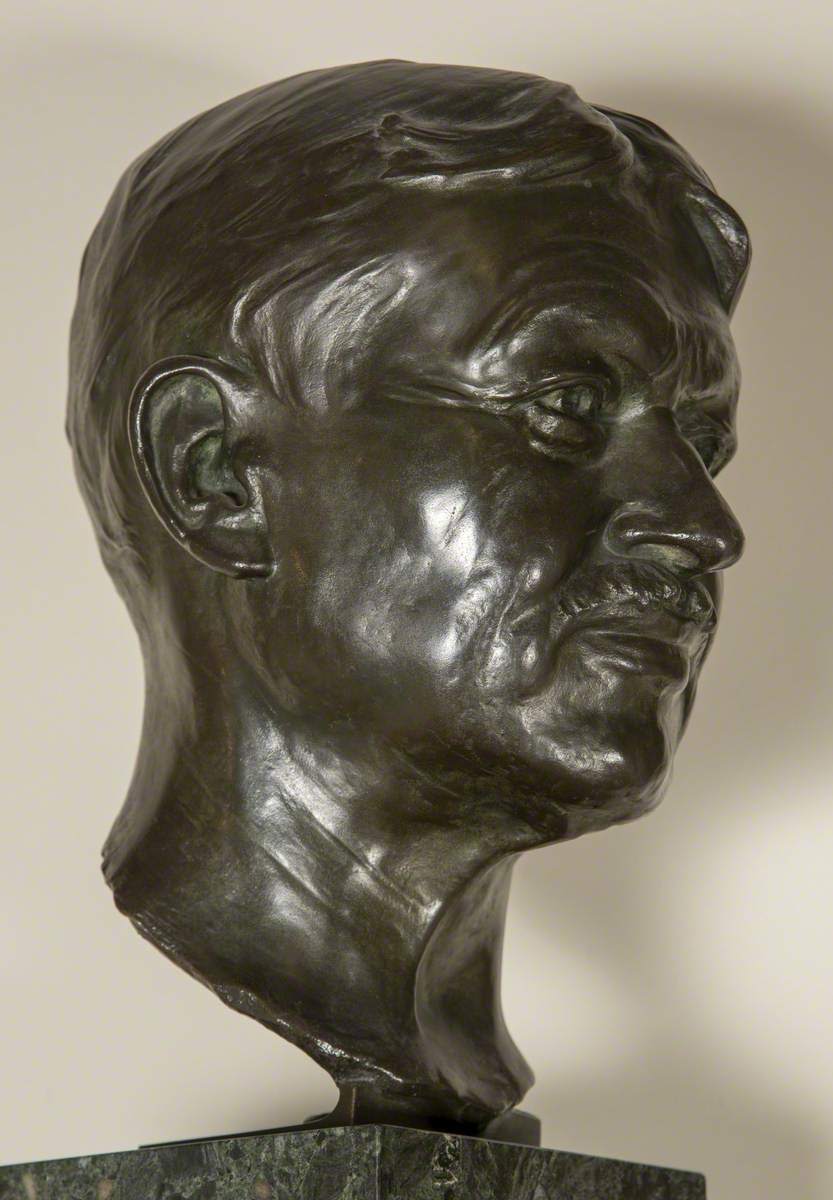 Seven designs were submitted and the selected winner was John James Joass of London, whose design of an urn-topped cenotaph accessed via three avenues and surrounded by flower beds and seating was described by Brierley as being 'dignified, evenly proportioned, and scholarly'. The design also included provision for a crescent of 'artistic trees' behind the cenotaph (in the location of the Second World War memorial), but it is not known if this feature was implemented.
Seven designs were submitted and the selected winner was John James Joass of London, whose design of an urn-topped cenotaph accessed via three avenues and surrounded by flower beds and seating was described by Brierley as being 'dignified, evenly proportioned, and scholarly'. The design also included provision for a crescent of 'artistic trees' behind the cenotaph (in the location of the Second World War memorial), but it is not known if this feature was implemented.
It was erected in 1922 with the gardens were laid out at the same time and unveiled on 23 July 1922 by Colonel J H Hastings and Captain Thomas Harold Broadbent Maufe VC (who was later accidentally killed during the Second World War by mortar practice, and is recorded on the plaque inside the garden's Second World War memorial), and the dedication was led by Arthur W T Perowne, Bishop of Bradford.
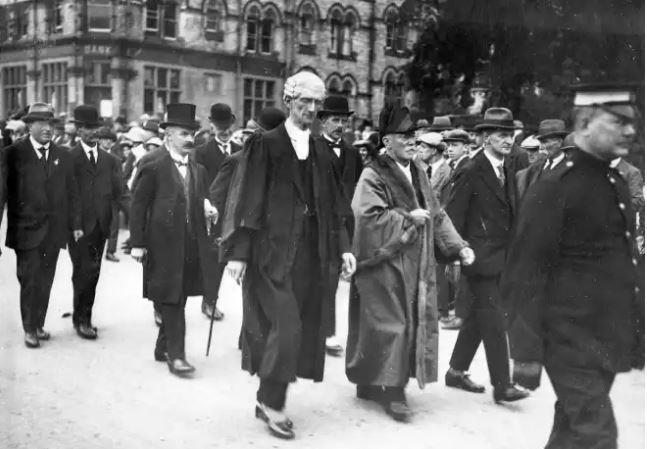
The 5.5m (19ft) high Portland stone WW1 memorial consists of a square cenotaph set on a square plinth, which stands on a large stepped octagonal platform with concave corners and small Portland stone bollards. The base of the cenotaph incorporates blind panels, and the upper part consists of a slightly tapering shaft with bronze panels on each face. These record the 183 names, ranks and regiments of those killed in relief lettering; the east face panel also incorporates an inscription. The cenotaph is topped by a 2-handled classical urn with gadrooning (ornamental notching or carving of a rounded moulding) to the upper part, floral swag (garland) relief decoration adorning the bowl, and foliate decoration emerging from the top in the style of flaming urns.
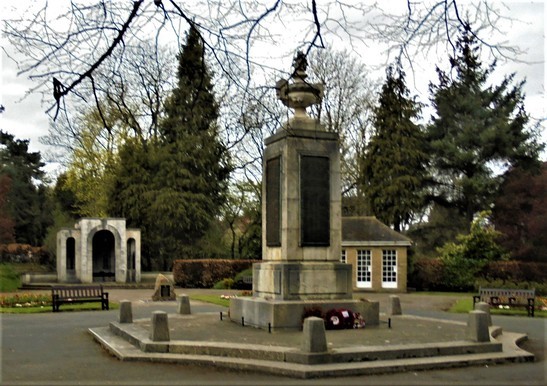
WW2 Memorial: In the early 1950s this was erected in the gardens, in the form of a triumphal arch-style shrine and two pavilion shelters and at a cost of £6,000. It took several years to construct as the Minister of Works, RR Stokes, prevented the memorial from being completed in 1950 as the war memorial committee had started works without the relevant permission. The committee wanted the shelters erected in time for the Remembrance Day service in 1950 and already had the support of the Ministry of Health, so they started in spring 1950, believing that they could spend up to £500 at this initial stage. However, this was not so and the Ministry of Works refused the granting of a licence having already exceeded their ceiling and overspent on a new embassy in Rio de Janeiro and the acquisition of a Constable painting!
The local people were outraged and the MP took up the case, forcing Stokes to subsequently agree to reconsider the decision. However, in the end the pavilions were completed without a licence!
It was unveiled on 26 April 1953 by Lieutenant-General Sir Philip Maxwell Balfour, General Officer Commanding-in-Chief Northern Command. The dedication was led by Canon A H Wellington, Vicar of St Margaret's Church, Ilkley. The ceremony, which included a parade through the town led by ex-service men and women, was attended by local councillors, clergy, military representatives, emergency services, and other dignitaries, and a guard of honour was provided by the Army Apprentices' School, Harrogate.
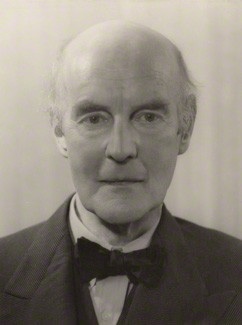 The shrine's architect is unknown but it may well have been designed by Sir Edward Brantwood Maufe (formerly Muff) (1882-1974) who was born in Ilkley and was the younger son of Henry Muff, a linen draper and partner in the Bradford department store of Brown, Muff & Co, and his wife Maude Alice Smithies, the niece of Sir Titus Salt, founder of Saltaire.
The shrine's architect is unknown but it may well have been designed by Sir Edward Brantwood Maufe (formerly Muff) (1882-1974) who was born in Ilkley and was the younger son of Henry Muff, a linen draper and partner in the Bradford department store of Brown, Muff & Co, and his wife Maude Alice Smithies, the niece of Sir Titus Salt, founder of Saltaire.
From 1943-1969 he was first principal architect UK and then chief architect and artistic adviser to the Imperial (later Commonwealth) War Graves Commission, where he designed, amongst many others, the Air Forces Memorial at Runnymede, Surrey. The family changed their name to Maufe in 1909. His cousin Thomas unveiled the WW1 memorial in 1922 (see above).
A third memorial in the Gardens, the Centenary Memorial Plaque or Armistice Memorial, located midway between the other two, was unveiled during the 2018 Remembrance Service and is dedicated to the serving men of the Ilkley district who survived WW1 and those who subsequently came to Ilkley to help build the post-war world.
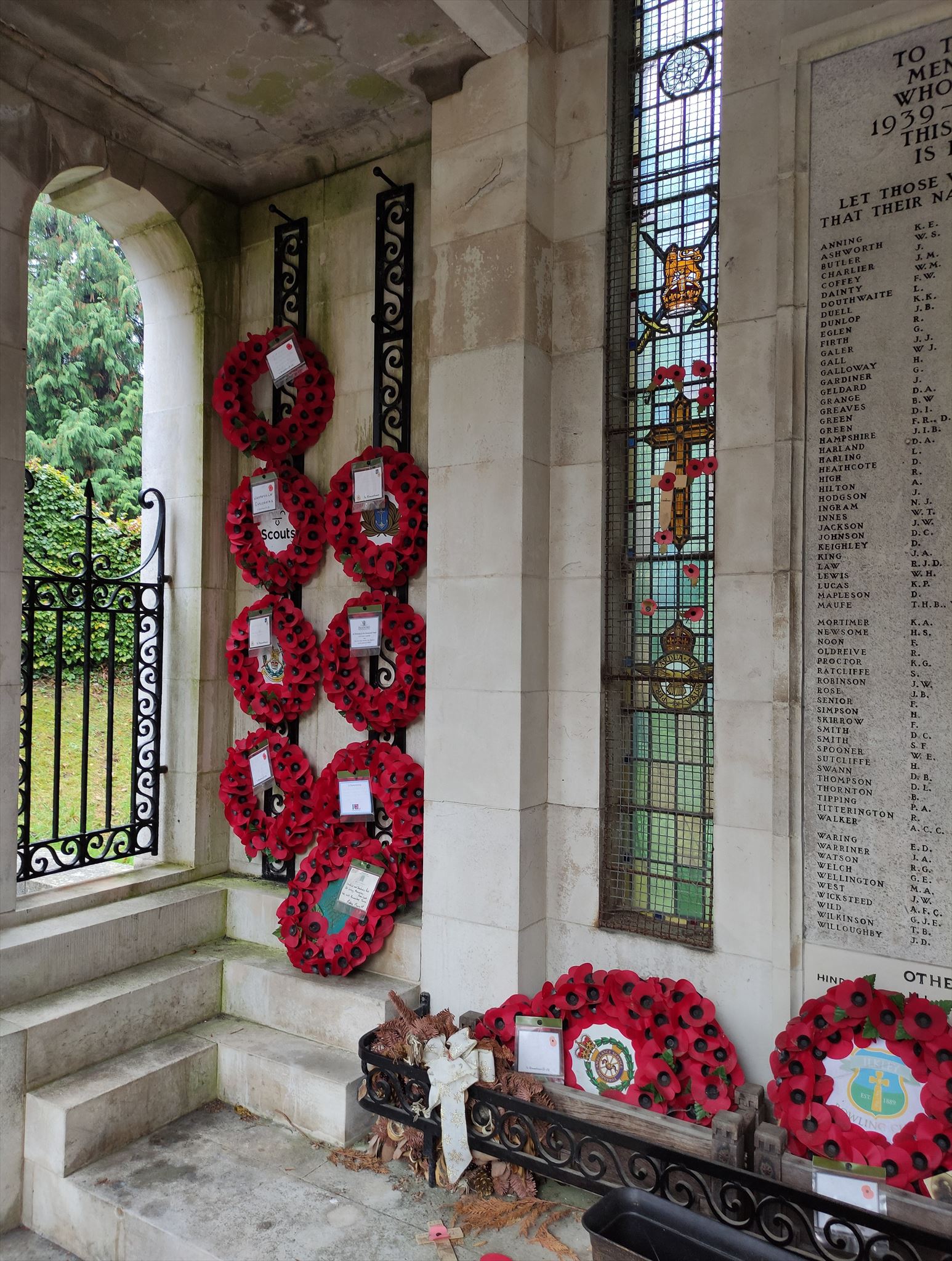

If anyone would like to add to the series please let Just-Us-Two know first at justustwo1013@gmail.com so they can keep track of memorial numbers & names to avoid any duplication.
Please note: Caches are not allowed on actual memorials or within their boundaries.
Always treat memorial locations with respect.